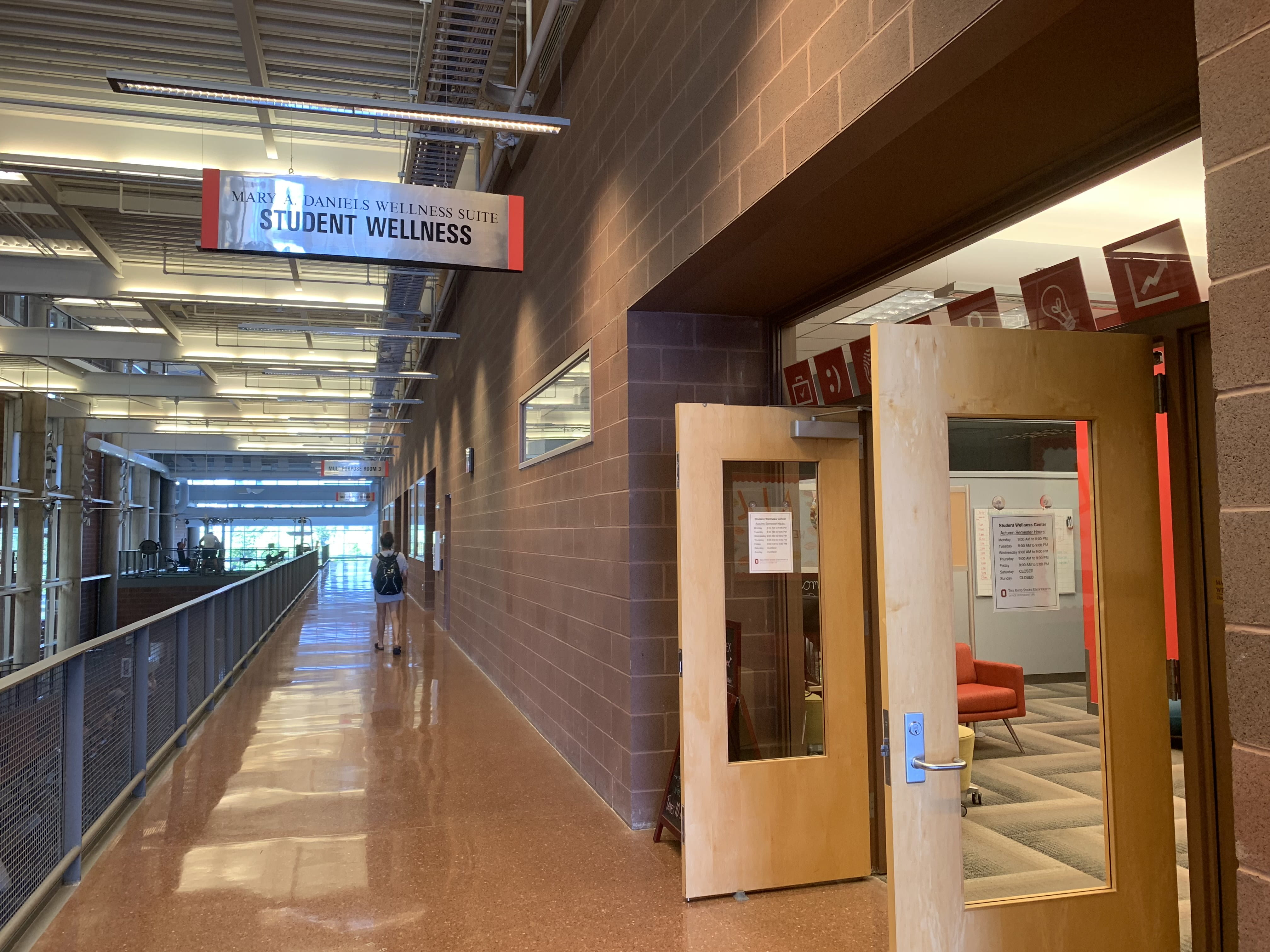
Ohio State’s Student Wellness Center, located inside of the RPAC, is still providing care for its students in the midst of a pandemic. Credit: Cori Wade | Photo Editor
In the midst of a pandemic when health is on the forefront of everyone’s mind, Ohio State’s Student Wellness Center is still providing care for its students.
Despite social distancing regulations that limit in-person contact, the wellness center is still maintaining all of its resources for students with some appointments, such as nutrition services, being moved online to host virtual appointments for patients.
Just like many other professionals on campus, Janele Bayless, wellness coordinator for nutrition education at the wellness center, said only one thing has really changed about her job: conducting appointments on her computer instead of seeing people in her office.
“Other than providing appointments virtually through Zoom, everything, for the most part, has remained the same,” Bayless said.
The online nutrition coaching process consists of a questionnaire — surveying one’s nutrition, physical activity and any additional health concerns — a food record and a scheduled meeting, Bayless said.
Bayless said she has seen students whose eating habits may have been affected by the COVID-19 crisis. She said anxiety and depression stemming from the pandemic can cause someone to eat less or cause comfort eating.
“As a result of someone’s concerns about COVID, they might find themselves emotionally eating a little more,” Bayless said. “Some students express concerns around lack of physical activity too.”
Services such as financial coaching, nutrition coaching, wellness coaching and the Buckeye Peer Access Line continued even when the university announced classes would resume virtually, Brendan Greisberger, associate director of the wellness center, said.
“Something that I think we are really proud of is just knowing that we adapted and students could still schedule appointments,” Greisberger said. “We met the demand that we were seeing really well.”
Now that school is back in session, Bayless said she is waiting to hear how students have adjusted their eating and exercise habits.
“Maybe having a schedule, structure and some of the resources that have been made available through recreational sports, I’d like to think that students might feel like they are able to get back into a rhythm and routine, similar to what they were experiencing pre-COVID,” Bayless said.
Greisberger said for other coaching resources, such as financial and wellness coaching and relationship education, the wellness center is able to make accommodations if students feel more comfortable meeting in person.
Additional information about the Student Wellness Center and types of coaching services can be found on the wellness center’s website.
Correction: This story has been updated to accurately reflect the services of the wellness center.


